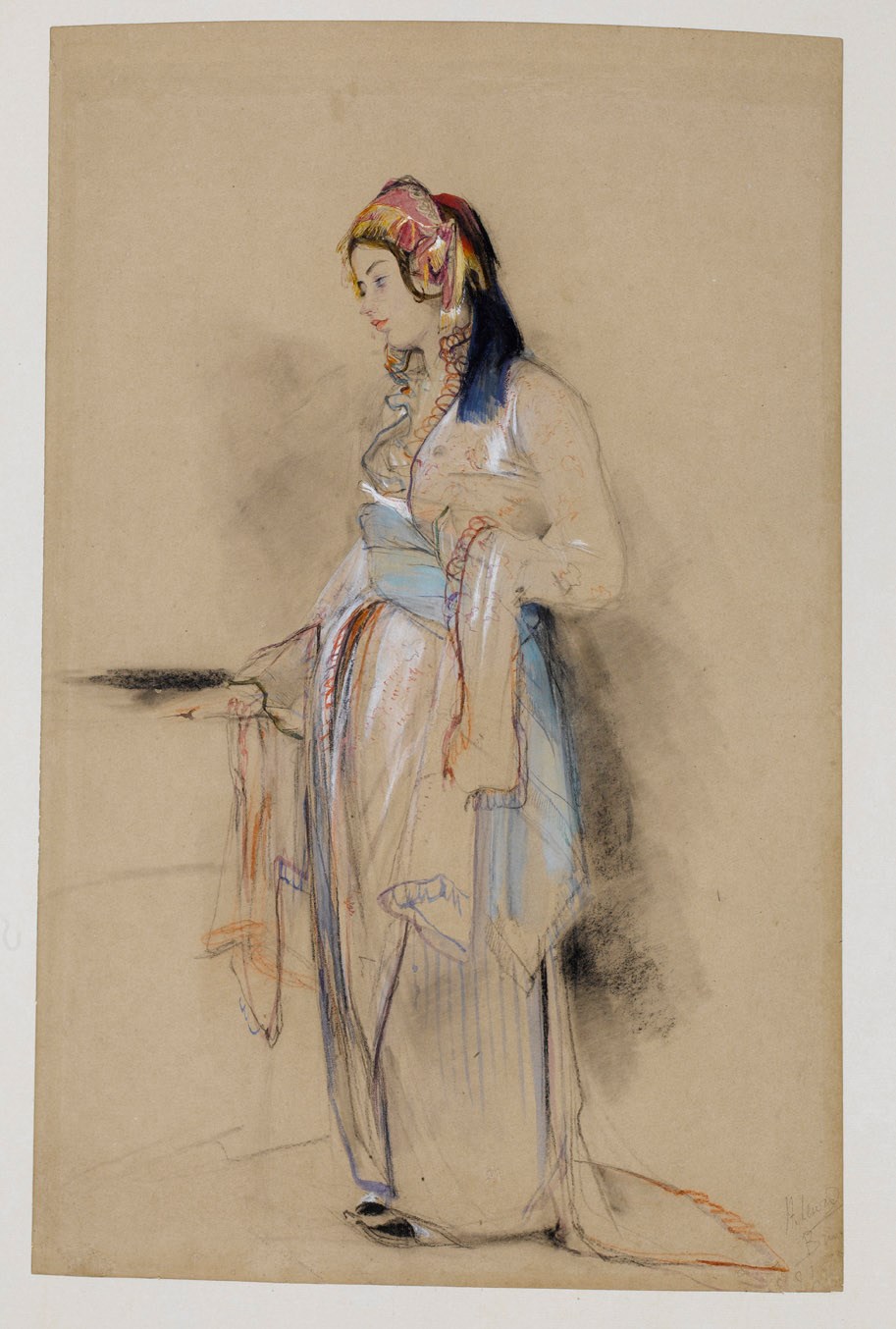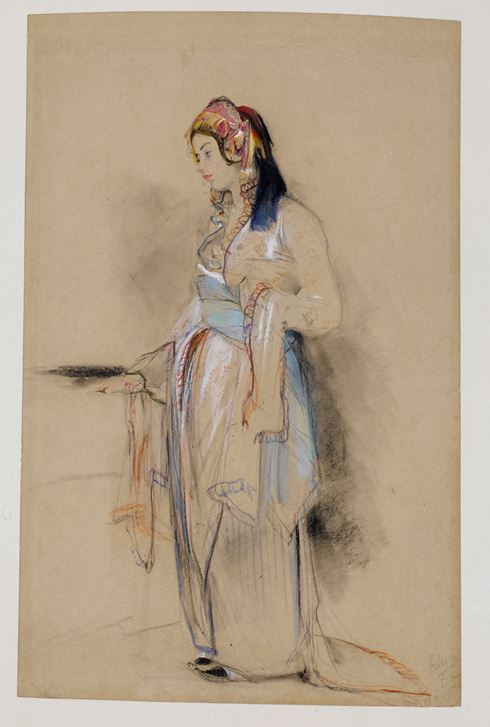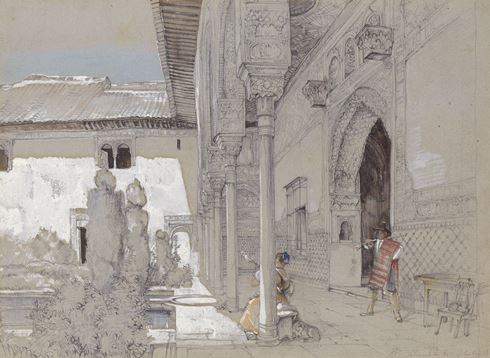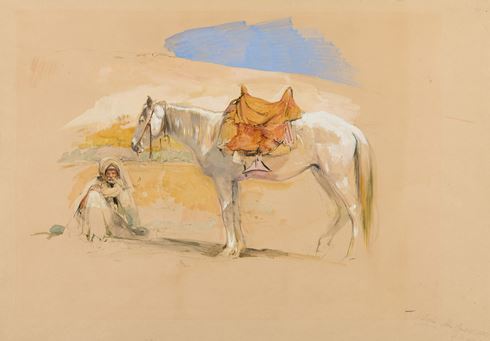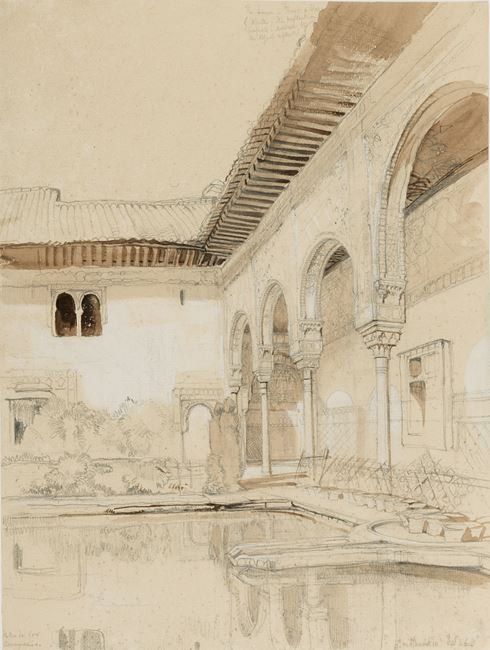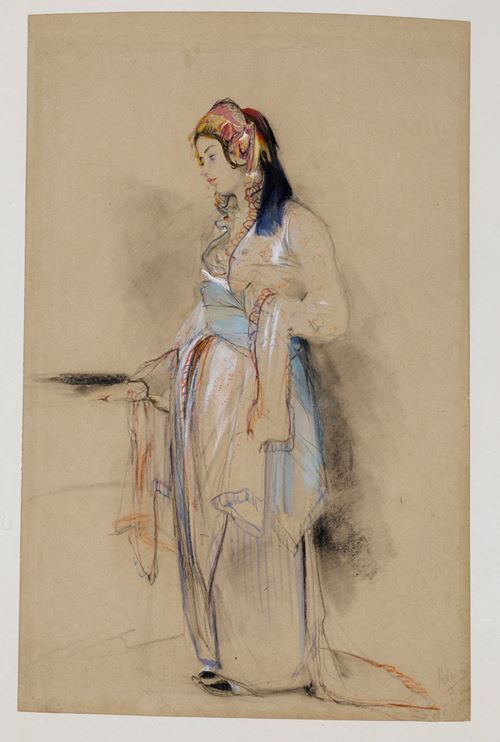
John Frederick LEWIS
London 1805 - Walton-on-Thames 1876
Biography
After some early success as a painter, mostly of animal subjects (an interest he shared with his childhood friend and neighbour Edwin Landseer), John Frederick Lewis seems to have largely given up painting around 1830, in favour of drawings and finished watercolours. These works were exhibited at the Society of Painters in Water-Colours (to which he had been elected as an associate in 1827, at the age of just twenty-one), the Royal Academy, the British Institution and elsewhere. He made his first trip abroad in 1827, visiting Belgium, Germany, Switzerland and Italy. Between 1832 and 1834 Lewis lived and worked in Spain, producing numerous drawings, watercolours and lithographs of local sights, figures, costumes, buildings and landscapes. Spanish subjects dominated his exhibited output of finished watercolours for most of the succeeding years, as well as two volumes of lithographs published in 1835 and 1836, earning him the nickname ‘Spanish Lewis’. In 1837 Lewis left London to travel to Italy, where he spent two years, and from there went on to Greece, Albania and Turkey before eventually settling in Egypt at the end of 1841.
Lewis resided in Cairo for ten years, living as an Oriental gentleman in an elegant Ottoman house in the Azbakiyyah quarter of the city, dressing in the Turkish manner and enjoying what one visitor, the writer William Makepeace Thackeray, described as a ‘dreamy, hazy, lazy, tobaccofied life.’ He produced a large number of watercolours and drawings during his decade in Egypt before his return to England in 1851. For the remainder of his career he painted Orientalist subjects inspired by his years in the East, and based largely on the drawings made in Cairo. These depictions of mosques, bazaars, Eastern interiors, desert encampments and imaginary harem scenes proved immensely popular with collectors. In 1855 Lewis was elected President of the Society of Painters in Water-Colours, although the previous year he had also begun to exhibit paintings at the Royal Academy. His growing interest in oil painting, at the expense of watercolours, led him in February 1858 to resign from the Old Water-Colour Society, and for the remainder of his career Lewis’s exhibited works were mainly paintings. Elected an Associate of the Royal Academy in 1859 and an Academician in 1864, Lewis showed regularly at the Academy until his death in 1876.
Lewis’s paintings and watercolours of exotic Eastern subjects, executed in a meticulous and detailed manner, remained popular with collectors and connoisseurs throughout the later stages of his career. As his fellow artist and traveller Edward Lear noted, in a letter to Lewis’s wife written the year before the painter’s death, ‘There have never been, and there never will be any works depicting Oriental life – more truly beautiful and excellent – perhaps I might say - so beautiful and excellent. For, besides the exquisite and conscientious workmanship, the subjects painted by J. F. Lewis were perfect as representations of real scenes and people.’

